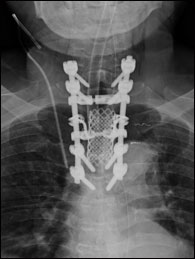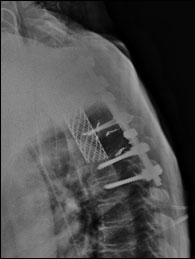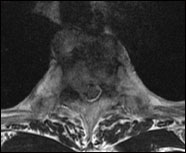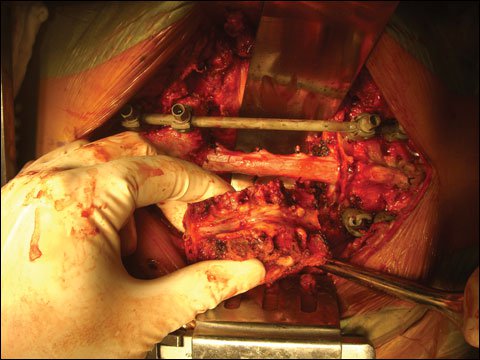Study shows iodine-supported instruments helped reduce spinal SSI risk
Results of a study showed the spinal instruments can also reduce the risk of other serious complications.
Because revision surgery after total spondylectomy can be technically demanding and lead to complications, Japanese investigators studied their surgical results with titanium instruments with iodine-containing surfaces and found the instruments helped mitigate the risk of surgical site infections and reduce the need for revisions after total spondylectomy performed for tumors.

Hiroyuki Hayashi
Hiroyuki Hayashi, MD, of the Department of Orthopaedic Surgery at Kanazawa University, in Kanazawa, Japan, said in a presentation that the use of iodine-supported spinal instruments in total spondylectomy can vastly reduce the rates of surgical site infection (SSI), complications and revision surgery when compared with the use of titanium-supported spinal instruments.
The investigators developed a new procedure for the anodization of iodine-containing surfaces used with existing titanium implants, he said.
“We have carried out clinical trials using iodine-supported spinal instruments in spinal surgeries,” Hayashi said.
Iodine vs titanium instruments
“The purpose of this study was to evaluate the incidence of SSI in total spondylectomy using iodine supported spinal instruments,” Hayashi said.
Hayashi and colleagues analyzed the results of 119 patients who underwent total spondylectomy for a spinal tumor between April 2006 and February 2013. They divided the patients into two treatment groups; one group underwent surgery with iodine-supported spinal instruments (66 patients; 35 men and 31 women) and the other group underwent surgery with titanium spinal instruments (53 patients; 24 men and 29 women).

Figure 1 &2. Left and right are postoperative radiographs. A year after surgery, there were no adverse effects from the procedure..


Figure 3. Preoperative MRI in a 62-year-old patient shows a metastatic tumor of T3 due to renal cell carcinoma.

Figure 4. Surgeons performed a total spondylectomy with iodine-supported instruments.
Image: Hayashi H
There were no significant differences between the groups in terms of mean age or the ratio of men to women, according to Hayashi, and there was also no significant difference between the two groups for percentage of patients with diabetes, he noted.
Hayashi and colleagues compared the potential risk factors of SSI and the incidence of SSI between the two groups, and they looked at the effect that iodine from the implant has on the body and the patients’ thyroid hormone levels in the blood.
Infection rates reduced
The results showed 1 patient of the 66 patients in the iodine instrument group developed an SSI and 6 patients of the 53 patients in the titanium instrument group developed an SSI.
“It was certainly statistically significant in terms of the SSI rates,” Hayashi said. “The rate of SSI was 11.3% in the control group and 1.5% in the iodine group. The difference was statistically significant.”
In terms of the SSIs that patients in the study developed, all seven cases were classified as deep SSI, according to Hayashi.
“Four of the six patients in the control group went through revision surgery because the antibiotics were not effective. In the iodine group, one patient had a SSI and was cured with antibiotics alone,” Hayashi said.
Furthermore, results of the blood analysis showed no abnormalities of thyroid gland function in the iodine-supported spinal group, according to Hayashi.
“The results of this study suggest that iodine-supported spinal instruments can be very effective in the prevention of SSI after total spondylectomy,” he said.
“Iodine-supported spinal instruments were effective for prevention of SSI after total spondylectomy. In addition, there was no cytotoxicity and adverse effects detected,” Hayashi said. – by Robert Linnehan
Reference:
Hayashi H. Paper #592. Presented at: American Academy of Orthopaedic Surgeons Annual Meeting; March 11-15, 2014; New Orleans.
For more information:
Hiroyuki Hayashi, MD, can be reached at Department of Orthopaedic Surgery, Kanazawa University, 13-1 Takara-machi, Kanazawa 920-8641, Japan; email: snoopeanuts27@hotmail.com.
Disclosure: Hayashi has no relevant financial disclosures.
